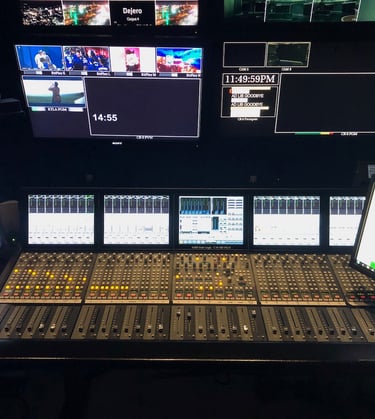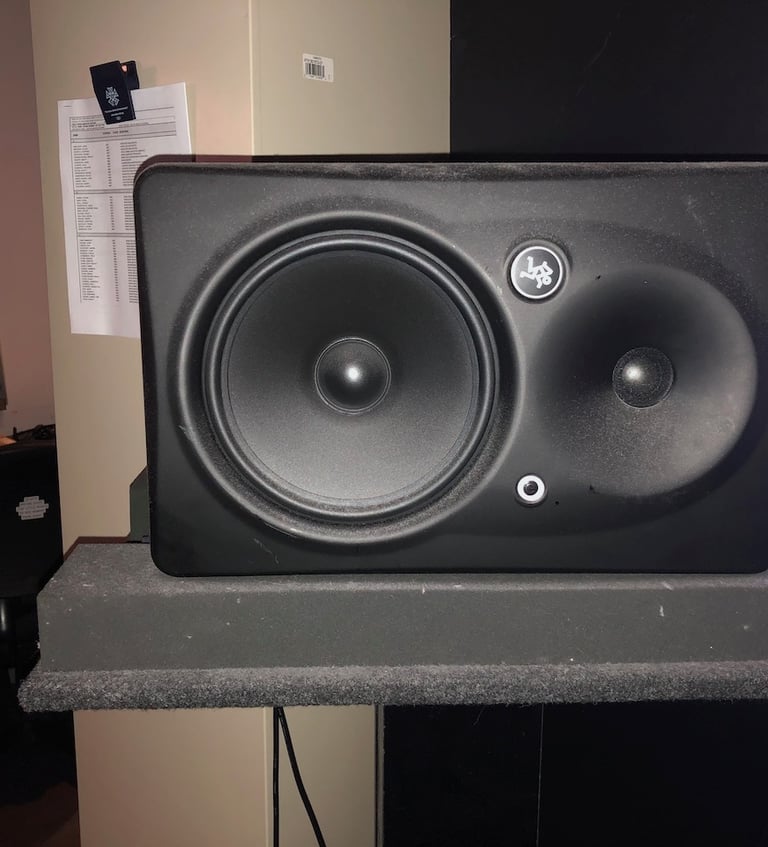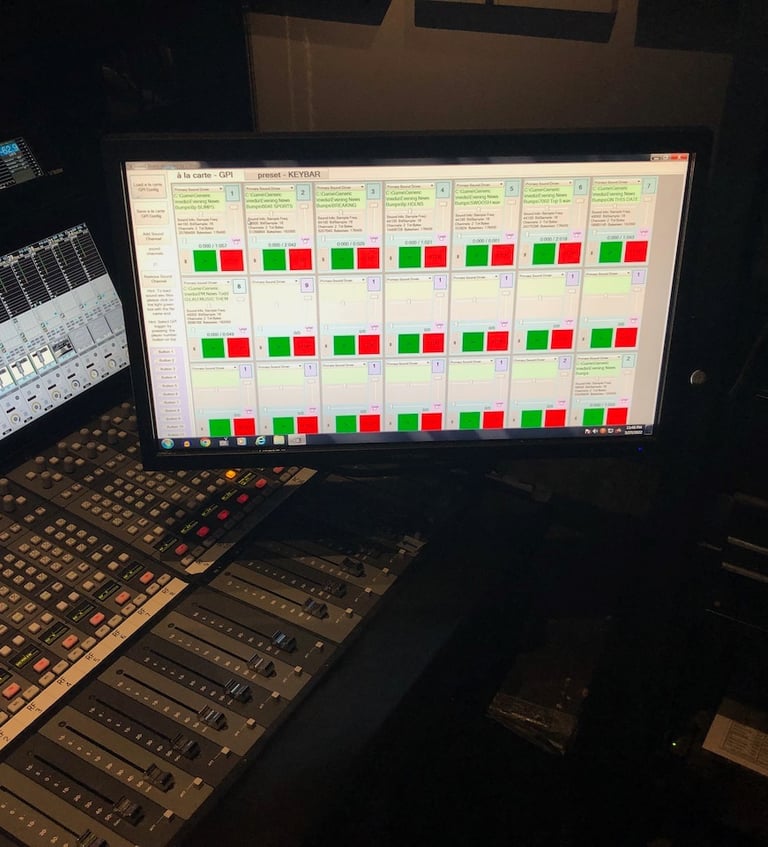KTLA: Audio for Local News
I find it far more difficult to talk about what I do at KTLA than I anticipated. I’ve tried describing what a typical day looks like, and then realize that’s not what I want to convey. I dive into describing technically how audio works in a live news situation, but that isn’t satisfying either.
First off, I’m not used to being part of a team of coequal mixers. In freelance variety, producers hire one mixer who runs the audio side of things, often to the point of bringing in his or her own crew. There are multiple mixers of course, but there’s just one lead person. KTLA, however, is on the air with scheduled local news 13.5 hours a day Monday through Friday and 10 hours a day Saturday and Sunday. Obviously this requires a team of mixers to cover all the shifts, often with handoffs happening in ad breaks between hours.
The Tools
All of the mixers work with the same tools. The console is an SSL C10, which is a smaller surface but essentially the same engine as the C100. SSL put a little widget in the desk called C-Play, which is a pretty close software imitation of a Digicart, and that functions as the primary music playback device. (SSL discontinued C-Play when they transitioned to System T, which is kind of a pity.) There is still a CD player, but the other main music playout device is a PC running a home brew jukebox app called CJ (for the guy who wrote the program). Monitors are a pair of Mackie HR824s, which I admit I was not fond of but have developed a grudging respect for.






The Romance of Local News
Yes, I said romance. The people who do this work grouse about it, like people in every occupation. But they all dearly love it.
Let’s get some basic facts out of the way. Local news, on a commercial station, exists to aggregate eyeballs. The more eyeballs, the more the sales department can charge for ad time. That’s a hard and fast rule throughout the industry, and outlets that ignore it don’t last long. That said, smart stations like KTLA know that their ultimate value lies in how enmeshed they are in their own communities. KTLA has a long history asking questions and telling the stories of Southern Californians, and has earned their trust.
Trust. Interesting subject. Especially when a man who trumpets the phrase “Fake News” becomes the authority on truth for a significant portion of the nation. At KTLA, the writers can sometimes get facts wrong, but they go out of their way not to. Field reporters can sometimes miss important items, but they make certain in their next hit to correct them. Anchors, when reading a Teleprompter live, can sometimes mispronounce a word or say the wrong one altogether. But they strive for accuracy. There is a well-defined set of ethics for gathering sources and presenting information with journalistic integrity, and KTLA adheres to it.
There is nothing fake about the news.


